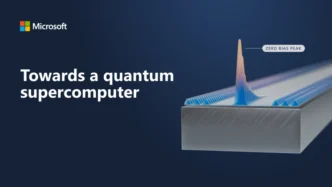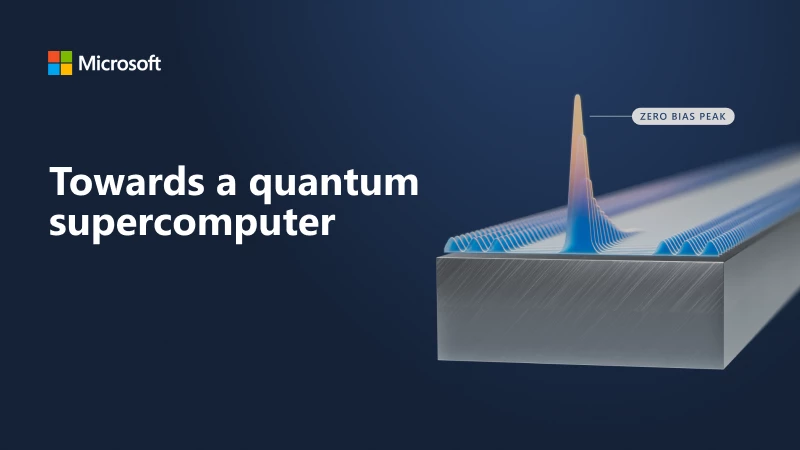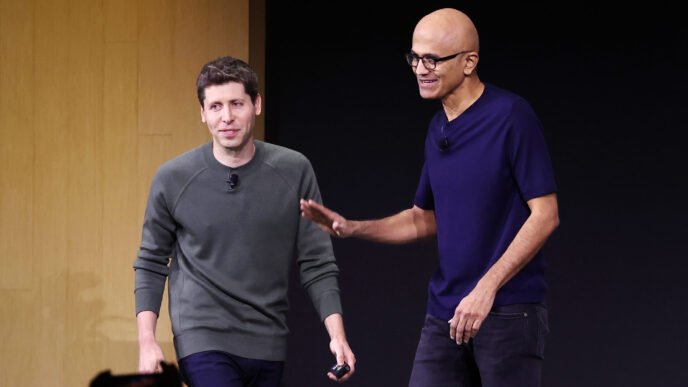Today, Microsoft announced a breakthrough in its 20-year quest to build topological qubits. This milestone could transform quantum computing by making systems more stable and easier to scale. The news comes as the tech giant pushes past traditional designs, opting for a method that promises fewer error corrections and enhanced stability.
A 20-Year Quest for Quantum Stability
Microsoft has spent two decades chasing a dream. They aim to build quantum computers that work reliably. Traditional qubits, like the superconducting ones used by Google and IBM, need extra qubits for error correction. This extra overhead slows progress and increases complexity.
- 20 Years of R&D: The journey has been long and filled with challenges.
- Error Correction: Conventional qubits require many backups to handle errors.
- Stable Systems: Topological qubits promise to reduce this overhead.
This new approach relies on topological qubits—an idea that has intrigued researchers since the early 2000s. Microsoft believes that with this design, quantum computers can eventually scale up to contain millions of qubits.
Topological Qubits: The Future of Stability
Topological qubits work differently. They are built on a foundation of robust physical states that protect them from disturbances. This means fewer errors and a more stable quantum system.
What Are Topological Qubits?
- Unique Design: They use mathematical twists in the fabric of matter.
- Built-In Protection: Their structure inherently guards against errors.
- Stability: They promise to be less delicate than traditional designs.
In a recent Nature paper, Microsoft revealed that they have wired up a chip containing eight topological qubits. This early success is a significant step toward larger systems that could host thousands or even millions of qubits.
The Role of Majorana Quasiparticles
At the heart of this breakthrough are Majorana quasiparticles. Although not real particles, they are patterns of behavior that mimic particles. Under the right conditions, they behave like Majorana fermions—a concept proposed almost 90 years ago.
- Self-Annihilating Nature: Two Majorana quasiparticles cancel each other out.
- Robust Design: Their unique behavior makes them hard to disturb.
- Quantum Bits: When harnessed, they can represent 0s and 1s in a quantum system.
Microsoft’s approach involves creating a nanowire from indium arsenide. This wire is paired with aluminum, which acts as a superconductor near absolute zero. Under these conditions, electrons can split and hide at either end of the wire, forming Majorana zero modes. This phenomenon is key to creating topological qubits that are naturally fault-tolerant.
Early Successes and Milestones
The company has reached several important milestones recently:
Nature Paper Breakthrough
- Fundamental Validation: The recent Nature paper validated a key protocol.
- Chip Integration: Microsoft has connected eight topological qubits on a single chip.
- Real-Time Data: Their experiments read out electron parity in nanowires—a vital step toward using these states as qubits.
Milestone Statistics
- 20-Year Journey: A long R&D path has led to this breakthrough.
- Eight Qubits Tested: Early prototypes already show promise.
- Roadmap Ahead: Microsoft envisions a fault-tolerant computer with a few thousand qubits in the coming years, and chips with up to a million qubits as a long-term target.
These numbers may seem small now, but they represent a turning point. Each new qubit is a building block for systems that could revolutionize computing power.
Overcoming Setbacks and Challenges
The road to this point has not been smooth. Microsoft’s journey has seen setbacks, including a high-profile paper retraction in 2018. These challenges forced the company to rethink and eventually bring the research in-house. Now, the team is on a clear path.
- Setbacks: Early research encountered significant hurdles.
- R&D Reinvention: The project was realigned under stricter controls.
- Resilience: Despite difficulties, the team pushed forward.
Chetan Nayak, a technical fellow at Microsoft, emphasizes the hard work behind these achievements. “You don’t get to a million qubits without blood, sweat, and tears,” he explains. This determination is critical in a field where every step forward is hard-earned.
Scaling Up: The Road Ahead
Microsoft’s goal is not just to create a handful of qubits but to scale up to systems that can solve real-world problems. Here’s how they plan to do it:
Future Milestones
- Fault-Tolerant Systems: Aiming for a computer with a few thousand stable qubits in the next few years.
- Million-Qubit Blueprint: They have a design for chips that could eventually contain around a million qubits.
- Improved Stability: By reducing error correction overhead, systems can become more efficient.
Key Strategies
- Material Innovation: Using materials like indium arsenide and aluminum to create the necessary superconducting conditions.
- Nanowire Engineering: Fine-tuning the nanowire setup to reliably produce Majorana zero modes.
- Iterative Testing: Gradually increasing qubit numbers while testing for stability and error rates.
Microsoft’s approach is methodical. Each advancement builds on the last. This slow and steady progress is what many experts believe will eventually bring quantum computing into practical use.
Expert Opinions and Industry Impact
The quantum computing community is watching Microsoft’s progress with keen interest. Experts from around the globe have weighed in on the significance of these advancements.
Voices from the Field
- Scott Aaronson, Quantum Information Center:
“I’m very glad that this research seems to have hit a very important milestone. I hope that it stands and builds up.” - Travis Humble, Oak Ridge National Laboratory:
“This is a good first step toward validating the type of protection that they hope to create.” - Sankar Das Sarma, Theoretical Physicist:
“We really were reinventing the wheel. The progress is impressive and concrete.”
These experts point out that while the journey is far from complete, the results so far are encouraging. The steady progress indicates that the long-awaited era of fault-tolerant quantum computing may be closer than expected.
Industry Statistics
- Error Reduction: Traditional methods require many extra qubits for error correction. Topological qubits may cut this number significantly.
- Scaling Potential: While some systems already boast over 1,000 qubits, Microsoft’s long-term blueprint targets a million-qubit system.
- R&D Investment: Microsoft’s project is the longest-running R&D program in the company’s history, underscoring its commitment.
The industry is evolving fast. Many companies are investing heavily in quantum research. Microsoft’s breakthrough shows that alternative approaches, though slower, might yield more stable and scalable results in the long run.
Interactive Insights: What Does This Mean for the Future?
Let’s break it down further with some key points:
- Stability Over Speed:
Topological qubits may take longer to develop but promise far fewer errors. - Cost Efficiency:
Fewer qubits for error correction mean lower overall system complexity and cost. - Global Impact:
A fault-tolerant quantum computer can solve problems that today’s machines cannot. Think weather prediction, drug discovery, and optimization challenges in logistics. - Innovation Ripple:
This breakthrough may spur new research avenues in both quantum physics and materials science.
Microsoft’s approach is not just a technical shift; it’s a strategic pivot that may redefine the future of computing. As more companies follow suit, the entire landscape of quantum research is likely to transform.
Conclusion: A New Era in Quantum Computing
Microsoft’s announcement marks a turning point. The progress in topological qubits is a testament to relentless innovation. With stable, scalable systems on the horizon, quantum computing is set to move from theory to practical reality.
This breakthrough is more than just a technical achievement. It is a signal that decades of hard work are paying off. Microsoft’s pioneering research could soon lead to fault-tolerant quantum computers that can tackle problems far beyond the reach of today’s technology.
The journey has been long and challenging. But with each new milestone, the vision of a quantum future becomes clearer. Whether it is solving complex scientific problems or revolutionizing industries, quantum computing stands ready to change the world.
Stay tuned as we watch this exciting technology evolve. The next few years could very well bring a quantum revolution that reshapes our digital landscape.











